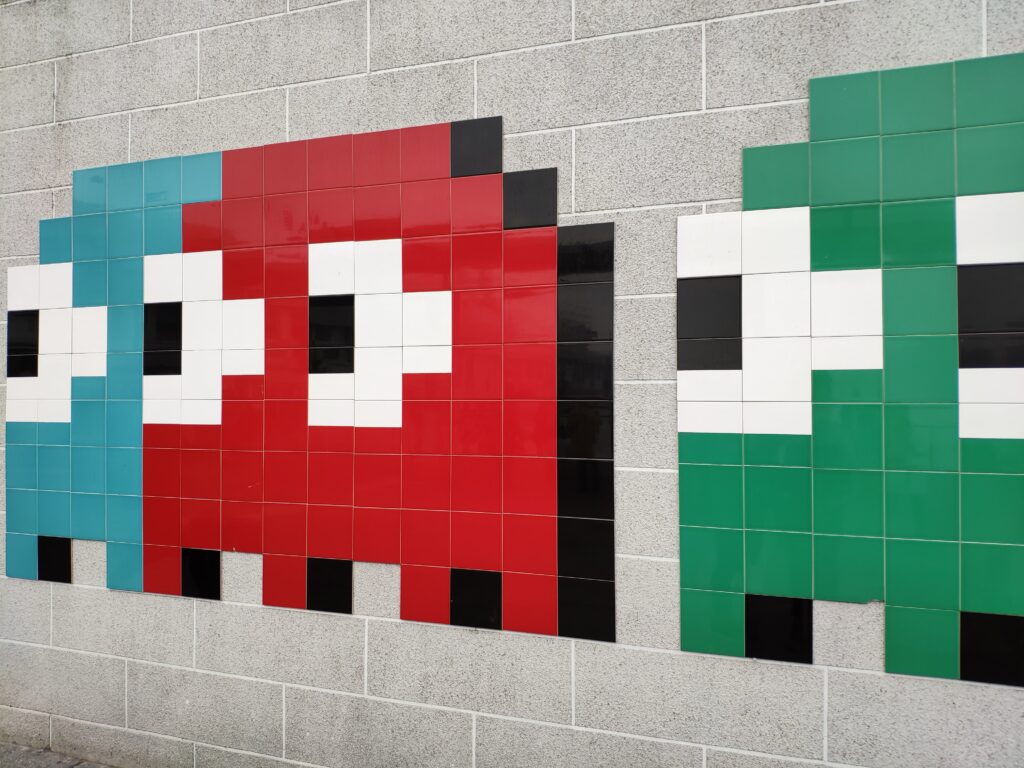Pac-Man 40th anniversary: history, review and characters

Pac-Man has celebrated its 40th anniversary in 2020, so we look back at the rise and continued popularity of this addictive arcade game.
This simple arcade game became a cultural icon in the 1980s, but unlike many other arcade classics, Pac-Man has continued to entertain both veteran and budding gamers for decades. Pac-Man celebrated its 40th anniversary in 2020, and few characters are as recognisable – even today – and It’s hard to think of many characters that are as iconic, or simple as Namco’s little yellow ball…
Programmed by Namco’s Toru Iwatani, Pac-Man (or Puck-Man as it was originally called) was a moderate hit in its native Japan. Success came when it entered arcades in the USA later that year, becoming an instant classic.
What does ‘Pac’ mean in Pac-Man?
Despite what Charlie Brooker’s video game-themed Black Mirror episode Bandersnatch lead us to believe, Pac-Man has nothing to do with ‘Program and Control’.
Scott Pilgrim was closer to the truth with his awkward pick-up line: Pac-Man was in fact originally called Puck-Man. In Japan, the phrase ‘Paku-Paku’ roughly translates to ‘flapping your mouth open and closed’. The first batch of machines even had Puck-Man branding, but for the US release executives (rightly) assumed that ‘Puck’ was too easily modified to say something less wholesome. Pac-Man was born, and Namco adopted the new name internationally.
Can you win at Pac-Man?
There is no official ending to the original Pac-Man arcade game, although several people claim to have achieved the perfect score of 3,333,360. At this point the game runs out of memory.
To achieve a score high enough to beat your friends, there are some basic techniques. The main thing is working out how to avoid those annoying ghosts…
Blinky, Pinky, Inky and Clyde – The Pac-Man ghosts

Although the original 24kb Pac-Man program might seem simple, but each enemy ghost has a unique character. Any serious player knows how to predict and evade each one, but it takes many hours to perfect.
Each ghost has regular patrol routes, but they will lock on to Pac-Man when you stray to close. When they start to chase, the ghosts also have their own quirks. During the earlier levels, the ghosts are fairly docile, but as you progress the speed and aggression increases.
Swallow one of the four power balls, and the hunted becomes the hunter, giving Pac-Man the opportunity to eat all four ghosts for some extra points.
Meet the family – Ms. Pac-Man and Jr Pac-Man

With Pac-Man a success, it was time to introduce a sequel into arcades. The question of Pac-Man’s gender was very much answered with the provocative Ms. Pac-Man in 1982. Developed as an unofficial modification to the original game by General Computer Corporation, Ms. Pac Man added new mazes and a female protagonist. To many, it is superior to the original.
Other spin-offs were less successful. Riding the wave of success, yet another follow up was launched in 1983. Jr Pac-Man was not as well received, and features a side-scrolling maze, while Baby Pac-Man and Pac-Man Plus failed to capture the public’s imagination.
Growing up – Pac-Man enters the console market
Unless you grew up during the glory days of arcade gaming, you probably got your first taste of Pac-Man at home. Although it was popular at the time, the Atari VCS version is probably best forgotten. The console’s serious limitations made this vivid and lively game into a bit of a horror show at home.
Those lucky enough to own the more powerful Atari 400/800 XL had a much better experience, and Ms. Pac-Man on the Atari 7800 was also relatively true to the original.
When the NES took off later in the decade, there was finally a version capable of capturing the original arcade magic. There has since been a Pac-Man variant on almost every home console, often appearing on Namco Museum compilations.
Pac-Man Fever – Toys, TV show and even a hit record
Everyone was cashing in on Pac-Man, and that meant that there were licencing deals and merchandise to sell! Pac-Man Fever was the title of a hit song by Buckner & Garcia about the craze, peaking at number 9 in the US Billboard Hot 100 during 1982.
That was just the beginning. Pac-Man would get his own animated TV show in September 1982, voiced by Peter Cullen – best known as Optimus Prime in the original Transformers series. If you didn’t like video games, MB Games had the perfect solution, the Pac-Man board game!
Other Pac-Man games – are they worth playing?
Pac-Man was a tough act to follow, but many modern and enhanced versions are worth seeking out. These often bring a degree of excitement and visual shine that might be missing from the originals. Pac-Man DX+ on the PS4 is a great example.
Some of the other spin-off games were less impressive. Pac-Attack on the SNES was a fairly blatant Tetris/Columns clone, with Pac-Land attempting to create a side-scrolling platform game. They weren’t bad games, but nothing that could hold a candle to the simplicity and fast paced jeopardy of the original.
One definite exception to this rule however, is the excellent Pac-Man World series of games on the PlayStation 1 and 2. Bringing Pac-Man into the realms of 3D adventure games, in the mould of Mario 64 and Crash Bandicoot, it was a fun re-imagining of our beloved yellow ball. Nothing ground-breaking, but surprising fun.

